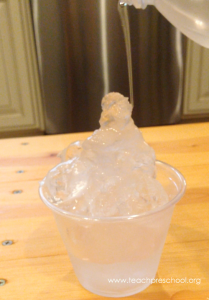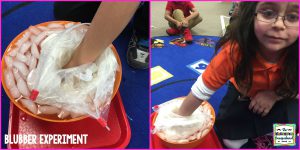Valentine’s Day Lacing Cards: Fine Motor Skills
Lacing is a fine motor skill that children should master around the age of 4 or 5. Lacing is most effective when done in conjunction with introducing crayons, pencils, markers and other writing utensils to their children. It’s essential because these activities help children perfect their pincer grip – you know, using your thumb and pointer finger together to grab things – which is necessary to hold a pencil properly.
Activities like this are crucial because it allows a break in the sometimes monotonous tasks of tracing or even coloring, and provides a wide range of motion that children can use. They’ll also become aware of the roles of their dominant and non-dominant hands. Stabilizing the cutouts while working the shoestring through the holes really strengthens those little fingers and muscles.
Materials:
- Paper
- Glue
- Yarn
- Hole Puncher
- Tape (Optional)
- Handprint Die Cut (Can be found at The Promise Resource Center!)
- Heart Die Cut (Can be found at The Promise Resource Center)
- Pen/Marker/Crayon
Directions:
- Start by cutting 2 rectangles out of the paper. Make sure one piece is just slightly shorter.
- Hold rectangles together and 4 evenly spaced holes on each side.
- Wrap tape around the tip of a long piece of yarn. Knot the other side of the yarn.
- Lace the yarn through the holes in the paper so that the 2 rectangles will stay together. You can use a bit of glue to make sure they are secure to each other.
- Cut out a handprint and have a child write their name on the hand. Glue the hand to the front of the cards.
- Have the child write or tell you the names of the people they love on the die cut hearts you made.
- The child can either give the card to the people they named on their hearts or use the pocket as a valentine’s day card holder.
Winter STEM Activities
Looking for ideas to keep children interested in STEM (Science, Technology, Electronics, and Math) in these cold winter months?
Here are 2 easy and fun winter STEM activities to try!
Growing Ice Experiment

Place unopened bottles of water in your freezer and leave them there for about 2 hours and 45 minutes.
While you wait for your water bottles to cool, prep a work station with a container of ice. You can use a cup, bowl, or tray of ice.
After the 2 hours and 45 minutes, your water should not be frozen. Gently carry the water to your work station. Do not shake, bump, or disturb the water as it will freeze.
Slowly pour the water onto the ice in the container. The ice should freeze the water on impact and create “growing ice”!
The reason the water instantly turns to ice is because the water in the bottles is VERY close to freezing and when it touches the already frozen ice, it sends it over the edge!
Arctic Blubber Experiment

Have children put their bare hands in a bowl of icy water for as long as they can (up to 30 sec.).
Once their hand is dry, put a rubber glove on their hand and make a fist.
Layer the fist with lots of canned shortening.
Place plastic wrap over the hand and shortening to create a seal.
Have child put their hand back in the water and feel the temperature difference.
Explain that arctic animals have a layer of blubber that keep them warm in icy conditions.

